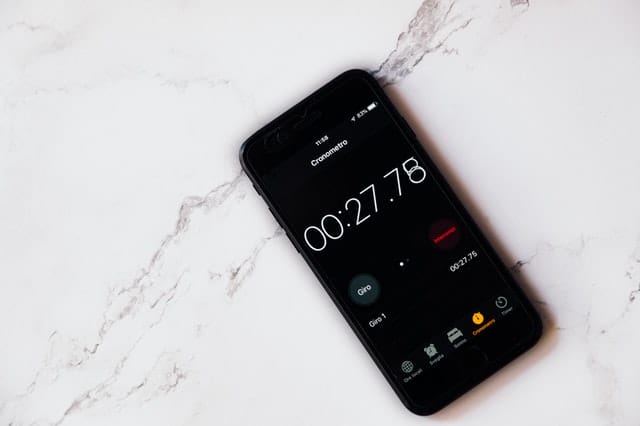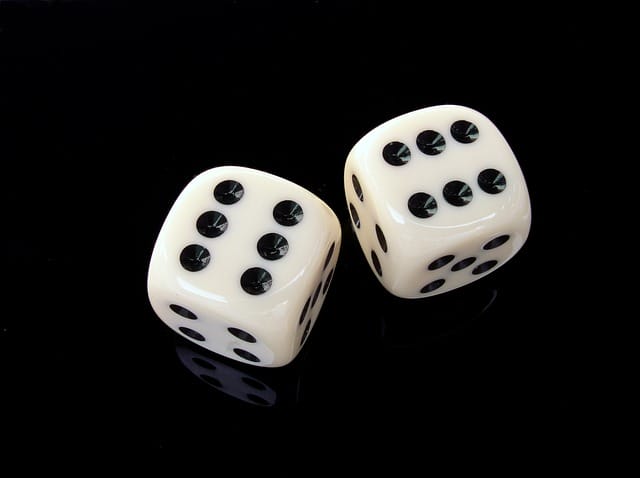If you are like what I used to be the past, making trivial decisions can be taxing, and at times crippling, wasting epic amounts of time and mental energy. Recently, I’ve discovered / invented some methods, which have been revolutionary for me, for being able to make decisions faster, save mental energy, and to be more productive.
Before I talk about the methods for quickly making decisions, I want to list some benefits of avoiding or lessening indecision:
- Saves lots of time
- Saves you from lots of stress / agony
- Helps you progress further in life: in your career, with your goals, in your personal life etc.
Methods for choosing between 2 different options
Stopwatch Method
For this method, all you need is a simple stopwatch. My wrist watch has one, and my mobile phone has one as well. You should be able to download a free stopwatch app onto your mobile phone if you don’t already have one.
How the Stopwatch method works
In a nutshell, for this method, all you need to do is start the stopwatch, wait a random amount of time and ideally look away from the stopwatch, stop the stopwatch, and then note the seconds time for the stopwatch.
Let’s say we have 2 options from which you can’t decide on, option A and option B. Decide beforehand that if the stopwatch ends on an even number (0, 2, 4, 6…) that you will choose option A and if it ends on an odd number (1, 3, 5, 7…) that you will choose option B.
An example could be, you want to buy a fruit, either an apple or a banana, but you can’t decide which to buy. I might say to myself something like, “if the stopwatch seconds time is an even number, I’ll buy an apple, and the seconds time ends in an odd number, I’ll buy a banana.”
The stopwatch method helped me save me tons of time and mental energy, and I think it can be effective for many other people too.
Coin Flipping Method
With this method, all you need is a simple coin, and the 2 choices you are deliberating over. Let’s call them option A and option B. For this method, decide beforehand which side of the coin will be linked to option A, and which side will be linked to option B.
Once you have decided which options will be linked to which side of the coin, flip the coin in the air, and either let it hit the ground, or grab it in midair. Whichever side of the coin comes on top, you will make the choice for whichever option was linked to the side.
For example, let’s say you are in an airport and wanted to buy a book and you are agonizing over which book to buy. Assume you narrowed it down to 2 choices, but still could not decide.
Let’s say book #1 is “Getting Things Done” by David Allen, and book #2 is “The Power of Habit” by Charles Duhigg. Typically people call one side of a coin “tails” and the other side “heads”. You would do something like decide to buy “Getting Things Done” if the coin lands on heads or buy “The Power of Habit” if the coin lands on tails.
Currency Note Method
If you don’t have a coin around, a currency note may suffice. Just make sure you don’t do it while outside when it is really windy. Ideally do this inside. Like the coin flipping method, you could link choosing option A to one side of the note, and link choosing option 2 to the other side of the note. Throw the note up in the air, and whichever side of the note lands on top, choose that.
Methods When the number of choices is 3 or more
Using a Programming Language to randomly generate a number
Computers are able to randomly generate numbers very well. With this method, you would use a programming language, and tell the computer to generate a random positive integer (a whole number) for some range between some integer A and another integer B.
I’d recommend that if you have X possible choices, that you would choose a random integer between 1 and X inclusive. For example, if you have 5 choices to choose from, and you can only choose one of them, you’d have the programming language generate a random integer between 1 and 5. It could choose 1, 2, 3, 4, or 5, and you’d make your decision based on which number comes up. You’d assign each option one of the numbers beforehand, and whichever number comes up, you make the decision that is linked to that number.
One of my favourite programming languages is Python. On my phone, I have an app that can run Python code, and I often use this method to make decisions when there are 3 or more options.
A real life example
Recently, I was in a grocery store and wanted to buy some straws. I found the section where the straws were, but there were 3 or 4 different choices for straws. There were variations in colour, and bendability for the straws. If it were even 1 or 2 years ago, I might have spent several minutes deciding which straws to buy. But instead, I decided I didn’t want to waste much time, so I wrote some very simple python code to decide for me.
Since there were 4 types of straws, I had the program generate either a 1, 2, 3, or 4.
In Python you could use the following code for that:
from random import randint
randint(1,4)You can run the above code or your own modified version of the above code at a site like this. Or you could just google “run Python online”, and just copy and paste the code above.
Thankfully with this method, you don’t need to know how to program. But, you would need to know exactly how many choices you have. Let’s say that you have 7 different types of bread you could buy but you can’t decide which to buy. All you’d need to have to do for the above code work for you is to change randint(1,4) to randint(1,7). That would generate a random integer between 1 and 7. Beforehand you should have assigned numbers to each type of bread, and whichever number gets generated, that you buy that bread.
In essence with this method, I let the computer decide which number to go with, and I make the decision associated with that number. This method does not only work for the Python programming language. It can work for almost any programming language. So, if you prefer another language, adjust the instructions above as needed.
Dice method
Dice Method For 1-6 choices
This method uses a traditional die, like you might see in a casino, and this method can work well when you have up to 6 choices to choose between.
If you have exactly 6 choices to choose between, you could assign each choice a unique number between 1 and 6, and if the die landed on that specific number, you would make that decision.
If you have fewer than 6 choices, you can still use the dice method. You could just go from 1, up to the number of choices, and any numbers after that, you just ignore.
For example, if you only have to choose between 4 items, you could assign each choice a unique number from 1-4. And if the die lands on 5 or 6, you ignore the results and roll again until you get a 1,2,3 or 4 and then make the decision associated with that specific number.
Dice Method For 7 or more
You can also use the dice method for deciding between 7 or more choices. For these cases, you’d need 2 or more dice. Here the dice method is slightly more complicated than for the dice method for deciding between 1-6 choices. This method involves summing the numbers of the die together, along with taking some other factors into consideration
Note that the smallest sum of the numbers from the dice you could get is the number of dice because for any die, its smallest number from a roll is 1.
If you have 2 dice, the smallest sum of the dice you could get is 2, since for both of the dice, their smallest number is 1. If you have 3 dice, the smallest sum of the numbers you could get is 3 and so on.
If you use 2 or more dice, you will need to adjust the number range. For example let’s say if you had to choose between 18 choices. The maximum sum of 3 dice is 6*3 = 18, but the minimum sum is 3*1 = 3, not 1, so we’d need 1 more die, which means we’d need 4 dice. For 4 dice, the maximum sum of the numbers is 6*4 = 24, and the minimum sum is 4*1 = 4. If we had 18 choices, here is how we can adjust this:
The maximum of the sum for 4 dice is 4*6 = 24. With the minimum sum for 4 dice is is 4*1 = 4. For 18 choices, the maximum sum for 4 dice with 18 choices (assuming we start at 4) should be 18 + 4 – 1 = 21. (if you don’t trust me, add up all of the numbers from 4 to 21 including all the numbers. You should get 18). So, if you have to choose among 18 things, the sum of the dice can be any number between 4 and 21. If you happen to have the dice land with sums 22, 23, or 24, you can just ignore that roll, and roll again, until the sums of the 4 dice are between 4 and 21. You can use my method and adjust as needed for any number of choices. I don’t want to go more into the mathematics of this because I don’t want to overcomplicate this situation. If this method for choosing between 7 or more choices using dice is too confusing or complicated for you, I recommend using the programming language method I describe above.
Use your own creativity to generate your own methods
While the methods I’ve presented here have been super helpful for me, and I think they may be very helpful for you as well, you’ll probably get more enjoyment if you make some of your own decision making methods in addition to the ones presented here.
Conclusion
The whole point of avoiding or lessening indecision is so that you don’t become paralyzed and suffer and so you can live a more fulfilling life.
I’ve used these methods for making several trivial decisions, which is almost like outsourcing decision making. I don’t want to waste willpower and time on trivial things. I’d rather put that time and mental energy towards more useful things.
These methods can help prevent or lessen “analysis paralysis”, which can cause businesses to fail or miss good opportunities at least for trivial decisions. It can do similar things for you in your career and your personal life. Let’s discuss this more in the comments below.




